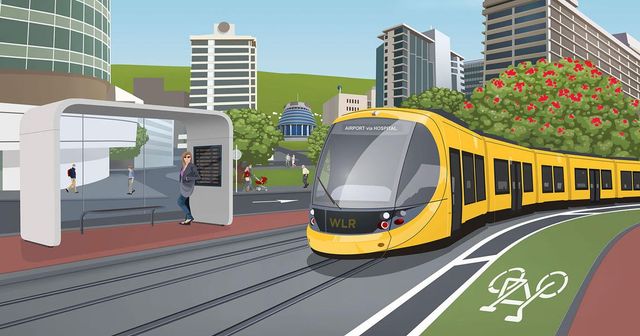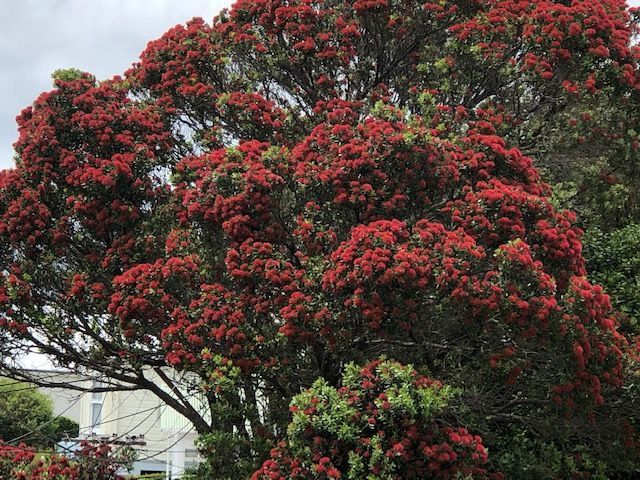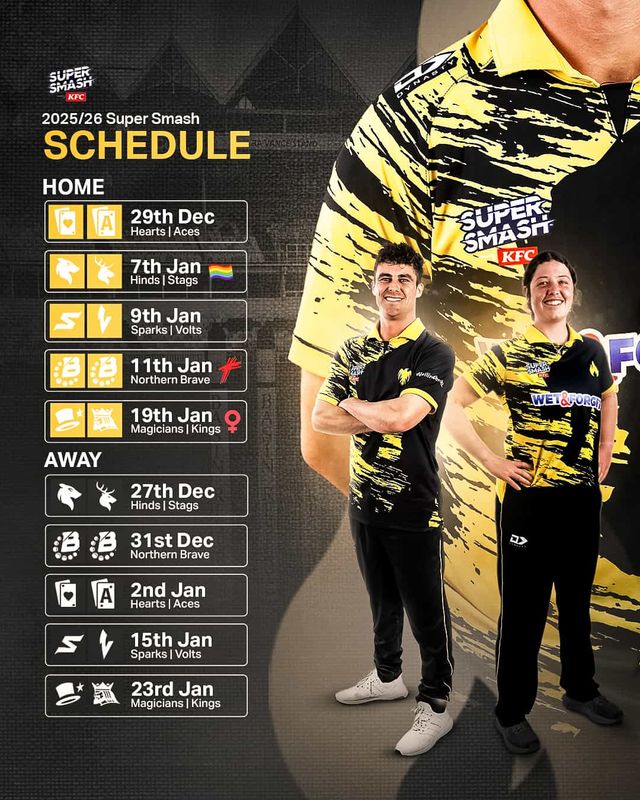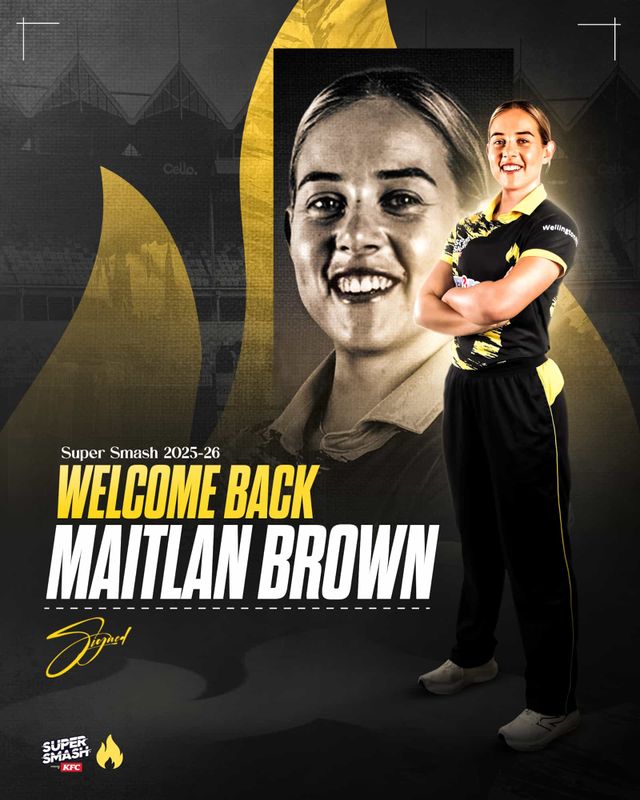Blogs / People
People related newsitems
-
-
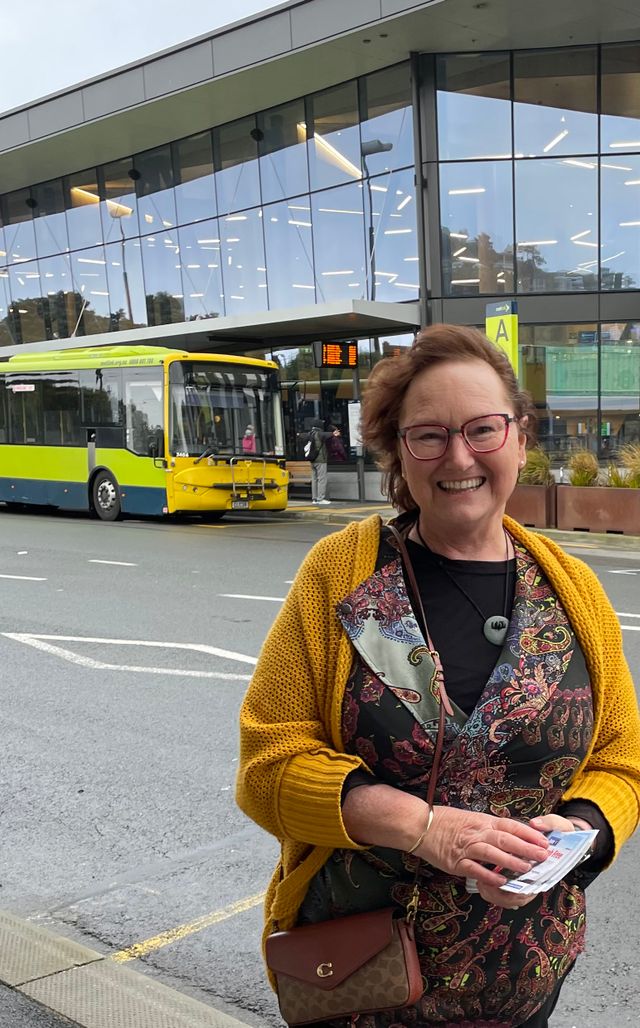
Feedback on buses from the campaign trail
- Sarah Free
- Talking to bus patrons over the last few weeks, I’ve had some interesting feedback. The bus system is generally working well, but there are still suggestions for adjustments and improvements. Island Bay and Johnsonville residents told me that the #1 route seems to get a lot of delays. Miramar residents told me the buses are […]
- Accepted from Sarah Free posts by feedreader
- Tagged as:
- island-bay
- johnsonville
- miramar
Miramar, Wellington, New Zealand (OpenStreetMap)
-
-
-
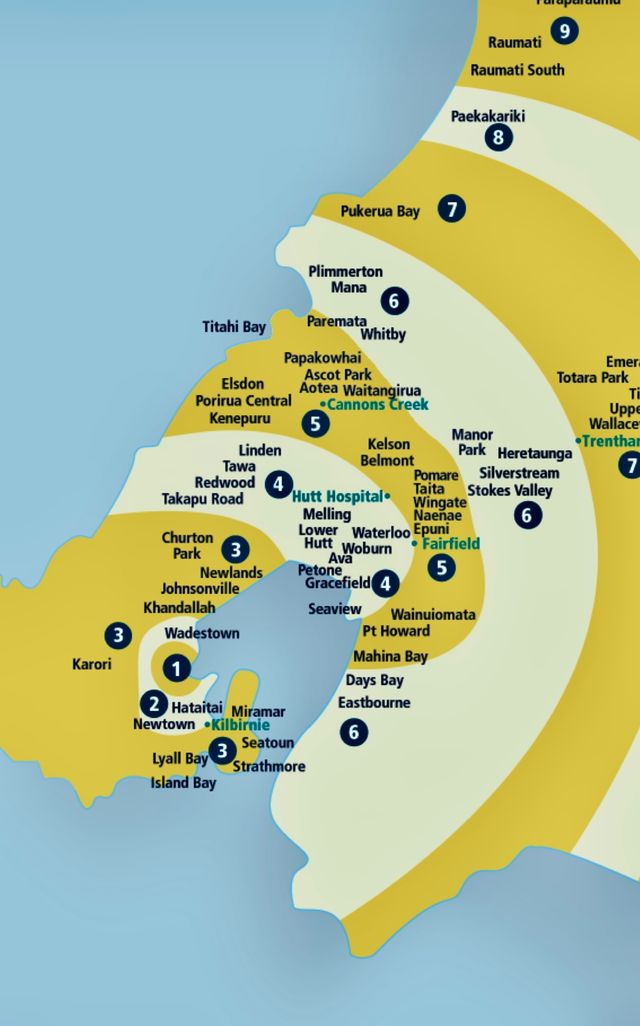
More Affordable Bus Fares for Wellington City?
- Sarah Free
- Fare Zone boundaries in Wellington City are quite small, so our bus users can easily pay two or three zones to travel a relatively short distance! As seen from this schematic, you would get a lot further for your one, two or three zones if you were in the Hutt Valley or Porirua. I would […]
- Accepted from Sarah Free posts by feedreader
- Tagged as:
- hutt-valley
- porirua
- fares
Porirua, Wellington Region, New Zealand (OpenStreetMap)
-
-
-
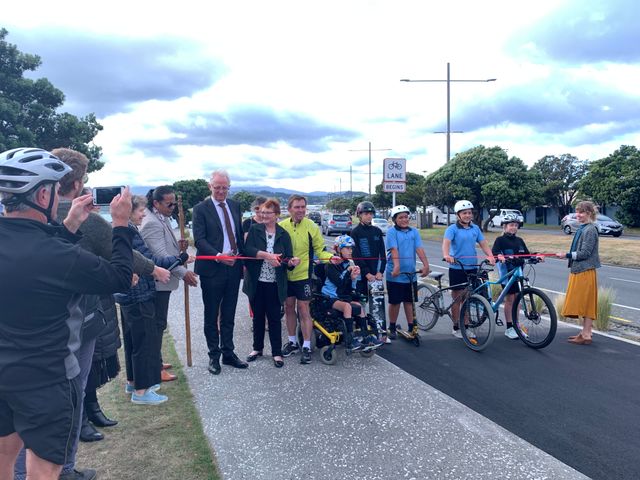
Making a Difference, 12 Years On…
- Sarah Free
- I was asked recently what I rated as my four biggest achievements on Council, and this was my reply: (spoiler alert, there are five) Cycling and Walking Improvements City-Wide: Along with quite a few uphill routes, there’s the Leonie Gill pathway, Evans Bay and Cobham Drive, the upgraded Island Bay cycleway and Town Centre- and […]
- Accepted from Sarah Free posts by feedreader
- Tagged as:
- island-bay
- cobham-drive-crossing
- island-bay-cycle-way
Cobham Drive, Kilbirnie, Wellington, Wellington City, Wellington, 6021, New Zealand (OpenStreetMap)
-
-
-
Some “Thanks” to lots of people really
- Sarah Free
- As I am now standing for the Regional Council, it’s timely to reflect on my time at the City Council. Leaving after 12 years is not without a sense of sadness, but it’s also an opportunity to reflect on what’s been achieved. I’ll cover some achievements I’m most proud of in a subsequent post. But […]
- Accepted from Sarah Free posts by feedreader
- Automatically tagged as:
- people
-
-
-
Elections 2025
- Sarah Free
- Newsflash, After much consideration, I’ve decided to run for the Regional Council in this October 2025 election. Wellington needs a strong champion to get value for our regional rates dollars, achieve greater transparency on who pays and who benefits- and to ensure we keep a world-class affordable, convenient and comprehensive bus network. Following the 2018 […]
- Accepted from Sarah Free posts by feedreader
- Automatically tagged as:
- people
-
-
-
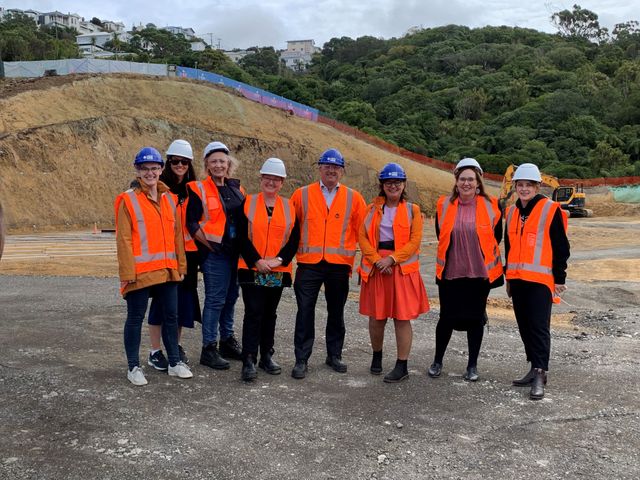
Fixing Wellington’s Water Woes
- Sarah Free
- There is no doubt we have been through a difficult time with our water infrastructure. My view is that generally aging infrastructure combined with damage from the 2016 Kaikoura earthquake accelerated breakages, and repairing this is not helped by a diminished workforce at Wellington Water (they are currently down one third of their staff). In […]
- Accepted from Sarah Free posts by feedreader
- Automatically tagged as:
- people
-
-
-
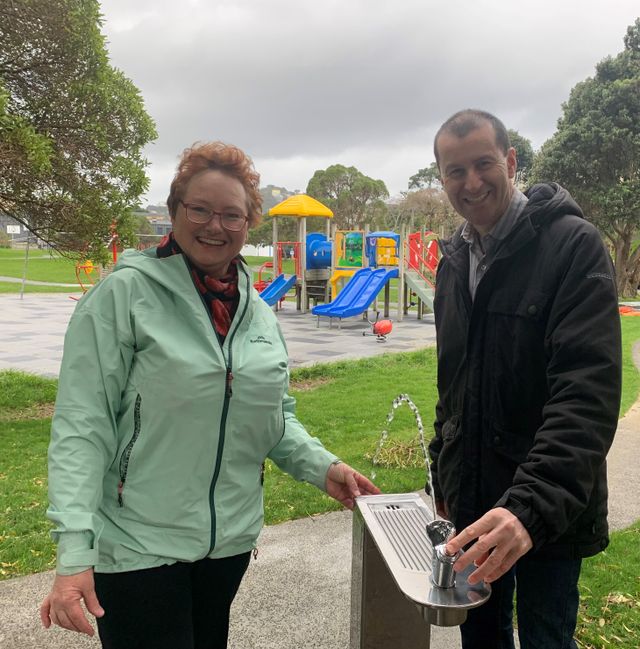
Missing the Cook Strait News
- Sarah Free
- I placed an ad with Regional News this week, but to be honest, I’ve had no feedback at all that people have seen it. ( Let me know if you have!) Anyway here is my pitch: Vote #1 Sarah Free for Motukairangi/Eastern Ward As Deputy Mayor, I’ve worked constructively with others to get things done. […]
- Accepted from Sarah Free posts by feedreader
- Automatically tagged as:
- people
-
-
-
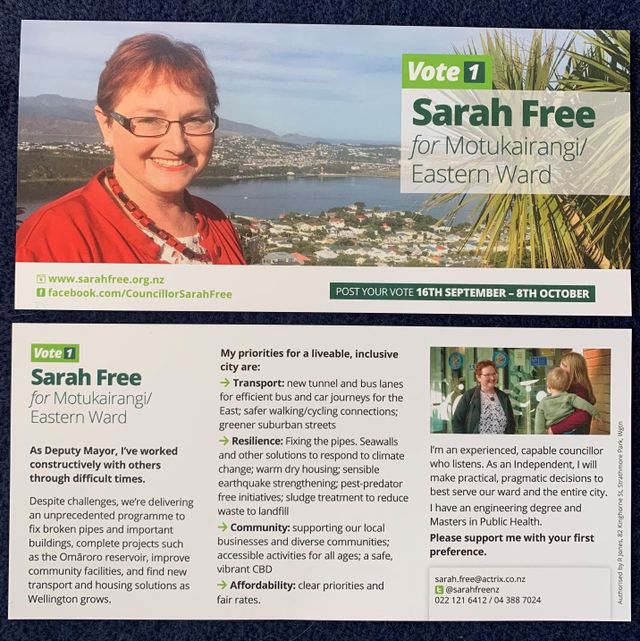
2022 Election Flyers
- Sarah Free
- This election, more than ever needs to be about spending priorities- how to provide the infrastructure renewals and upgrades we need to build an inclusive and liveable city fit for the future- while managing the pressures on rates and general affordability. The flyer with my priorities is below. As always, super keen to have feedback, […]
- Accepted from Sarah Free posts by feedreader
- Automatically tagged as:
- people
-
-
-
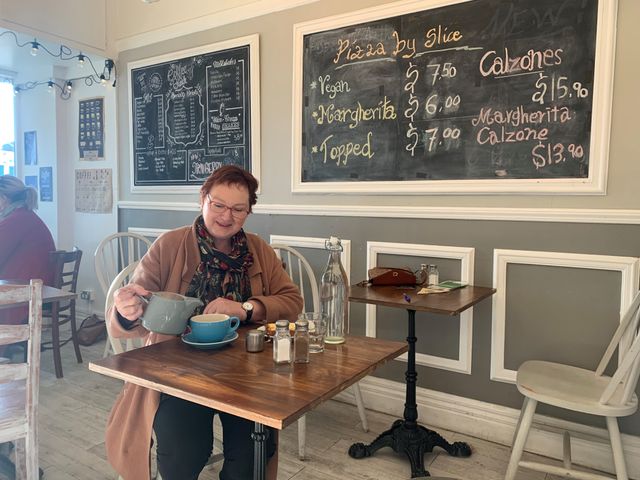
Celebrating local businesses
- Sarah Free
- We are so fortunate to have some excellent eateries and cafes in the eastern suburbs and on Sunday I popped into Nicoletta’s Bakery- a small cafe and bakery on Park Road I’d never tried before. Have to say the atmosphere was lovely, and their apple and cinnamon cake was to die for. Light and yet […]
- Accepted from Sarah Free posts by feedreader
- Automatically tagged as:
- people
-
-
-
Elections again!
- Sarah Free
- It’s been a difficult three years for Council, Wellington- and indeed the entire country and beyond. Following the 2016 earthquake, it became increasingly obvious that Wellington’s pipes-already decades old- were starting to leak and break with increasing frequency. To add to that, the Kaikoura earthquake had thrown up new engineering issues with relatively new buildings […]
- Accepted from Sarah Free posts by feedreader
- Automatically tagged as:
- people
-
-
-
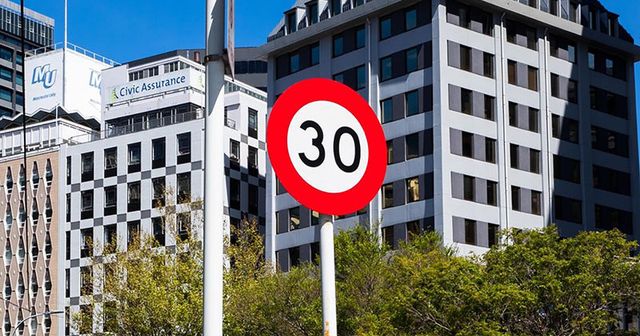
30km/h in the central city from July
- Let's Get Wellington Moving
- From the end of July speed limits on most central city streets will change from 50km to 30km - making our central city more more pleasant and appealing for everyone, especially for people walking and riding bikes. The final decision was made unanimously by Councillors at Wellington City Council on Thursday.
- Accepted from LGWM news by feedreader
- Tagged as:
- councillors
- people
- wellington
- speed-limits
-
-
-
Hundy Club Profile: Tomasi Palu
- Old Boys - University Rugby Club
- #image_1200984324 { width: 100%; } #image_2101861458 { width: 100%; } #image_837846994 { width: 100%; } #image_1484466077 { width: 100%; } Tell us about where you came from to join OBU? I left straight from Wellington College to OBU. My good mate Seminar Manu (also a Hundy Club member, a profile on him coming up soon hopefully), convinced me to come across to OBU. I was supposed to be going to Poneke with my brother Dave but my brother eventually came over to OBU and played a season or two around 2008-09. What’s your favourite on-field memory? My personal favourite on-field memory had to be when I scored 4 tries against HOBM. I had a career-ending injury that forced retirement later that season. Another great team on-field memory is definitely the Jubilee Cup wins!! The 2017 OBU team was the best club team I’ve ever played in. Another great memory was the 2015 Jubilee Cup win – this win was really important to me personally and emotionally because of the death of our OBU manager and my good mate Richard ‘Puds’ Newsome the year before. He always kept in touch with me and one of the things he said was you will come back to OBU from Norths and win a Jubilee Cup. To fulfil that vision, was one of the main reasons I came back to OBU and I’m stoked we managed to achieve that, not only to make history that year but also knowing he would have been having a few wets that night watching over us and celebrating. Who was your best coach? I have been coached by some great coaches over the years but the best has been Jamie Williams, our current premier coach. He definitely had a huge impact on my form and to still keep me performing at a high level. He definitely knows the game inside and out and this shows in the results he has achieved with the club since he came into OBU. Who were some of those other coaches? Jake White coached the Tongan team on our 2016 tour to Europe. He was a great coach and was great at keeping the boys engaged by making the video analysis sessions short and using as much Tongan language as he could to keep the players engaged. Jamie Joseph coached me with the Wellington Lions 2008. Chris Boyd with the Wellington Lions & also coached me for Tonga in the 2011 World Cup, when we beat France at the Stadium in Wellington. We knew the crowd would be on our side and they were in full red Tongan attire! Definitely a career highlight for me playing in front of a home crowd (along with family and friends) at the cake tin, while representing my country of origin. I was also coached by John Plumtree at the Wellington Academy during my first year out of college. What’s your favourite off-field memory? The court sessions stand out with some fun times. Also the Jubilee cup after-parties, as well as some mighty nights at the Cambridge including the annual Mr OBU pageant. Are you involved in rugby these days?. I retired from playing in the middle of the 2018 season, upon medical advice of a prolapsed disc in my neck which caused me to end my rugby career abruptly. I started coaching the Queen Margaret’s College 7’s team. The following year we made the national secondary schools 7’s tournament that was hosted in Auckland at King’s college. This was a big achievement for the first ever 7’s team in QMC to qualify for nationals, also a blessing as it was the start of my coaching career. Currently I’m now Director of Rugby for OBU. This includes being the Academy Director of the OBU Academy for male and female university students who play for our club. I helped coach the Premier Men’s team last year and I’ve also completed my World Rugby Level 1 and 2 for Coaching and am working on my Level 3 this year. I also volunteer as an assistant coach for the Colts Black team with Norman Ferguson this year, which is fun and keeps me developing my skills as a coach. Also learning the challenges that all coach’s face, and the many hats they have to wear but I enjoy it with a passion! Any messages of inspiration you want to pass back to the Goat community? Join in and get amongst the Goat herd, and enjoy your playing time!! Once you’ve finished, stay connected, stay involved, because without people we have no community and no club. The next generation of Goat players are always needing Goat mentors and support #OneHerd! You won’t regret it! Thanks Tomasi! You can check Tomasi’s Hundy club profile over here… The post Hundy Club Profile: Tomasi Palu appeared first on OBU Rugby.
- Accepted from OBU feed by feedreader
- Tagged as:
- rugby
- video
- stadium
- wellington
- art
- people
- secondary
Westpac Stadium, Waterloo Quay, Pipitea, Wellington, Wellington Region, 6011, New Zealand (OpenStreetMap)
-
-
-
The flowers and the bees
- Victoria University of Wellington
- Hannah Creary says her Summer Research Scholarship involved “ten amazing weeks working in one of New Zealand’s coolest museums with centuries old herbarium specimens and some pretty neat people”.
- Accepted from VUW News feed by feedreader
- Tagged as:
- mens
- people
-
-
-
June Update from DCM - together we can end homelessness
- Downtown Community Ministry
- 96 June Update from DCM - together we can end homelessness p{ margin:10px 0; padding:0; } table{ border-collapse:collapse; } h1,h2,h3,h4,h5,h6{ display:block; margin:0; padding:0; } img,a img{ border:0; height:auto; outline:none; text-decoration:none; } body,#bodyTable,#bodyCell{ height:100%; margin:0; padding:0; width:100%; } .mcnPreviewText{ display:none !important; } #outlook a{ padding:0; } img{ -ms-interpolation-mode:bicubic; } table{ mso-table-lspace:0pt; mso-table-rspace:0pt; } .ReadMsgBody{ width:100%; } .ExternalClass{ width:100%; } p,a,li,td,blockquote{ mso-line-height-rule:exactly; } a[href^=tel],a[href^=sms]{ color:inherit; cursor:default; text-decoration:none; } p,a,li,td,body,table,blockquote{ -ms-text-size-adjust:100%; -webkit-text-size-adjust:100%; } .ExternalClass,.ExternalClass p,.ExternalClass td,.ExternalClass div,.ExternalClass span,.ExternalClass font{ line-height:100%; } a[x-apple-data-detectors]{ color:inherit !important; text-decoration:none !important; font-size:inherit !important; font-family:inherit !important; font-weight:inherit !important; line-height:inherit !important; } .templateContainer{ max-width:600px !important; } a.mcnButton{ display:block; } .mcnImage,.mcnRetinaImage{ vertical-align:bottom; } .mcnTextContent{ word-break:break-word; } .mcnTextContent img{ height:auto !important; } .mcnDividerBlock{ table-layout:fixed !important; } h1{ color:#222222; font-family:Helvetica; font-size:40px; font-style:normal; font-weight:bold; line-height:150%; letter-spacing:normal; text-align:center; } h2{ color:#222222; font-family:Helvetica; font-size:34px; font-style:normal; font-weight:bold; line-height:150%; letter-spacing:normal; text-align:center; } h3{ color:#444444; font-family:Helvetica; font-size:22px; font-style:normal; font-weight:bold; line-height:150%; letter-spacing:normal; text-align:center; } h4{ color:#949494; font-family:Georgia; font-size:20px; font-style:italic; font-weight:normal; line-height:125%; letter-spacing:normal; text-align:center; } #templateHeader{ background-color:#0f288b; background-image:none; background-repeat:no-repeat; background-position:50% 50%; background-size:cover; border-top:0; border-bottom:0; padding-top:54px; padding-bottom:54px; } .headerContainer{ background-color:transparent; background-image:none; background-repeat:no-repeat; background-position:center; background-size:cover; border-top:0; border-bottom:0; padding-top:0; padding-bottom:0; } .headerContainer .mcnTextContent,.headerContainer .mcnTextContent p{ color:#757575; font-family:Helvetica; font-size:16px; line-height:150%; text-align:left; } .headerContainer .mcnTextContent a,.headerContainer .mcnTextContent p a{ color:#007C89; font-weight:normal; text-decoration:underline; } #templateBody{ background-color:#transparent; background-image:none; background-repeat:no-repeat; background-position:center; background-size:cover; border-top:0; border-bottom:0; padding-top:27px; padding-bottom:54px; } .bodyContainer{ background-color:#transparent; background-image:none; background-repeat:no-repeat; background-position:center; background-size:cover; border-top:0; border-bottom:0; padding-top:0; padding-bottom:0; } .bodyContainer .mcnTextContent,.bodyContainer .mcnTextContent p{ color:#757575; font-family:Helvetica; font-size:16px; line-height:150%; text-align:left; } .bodyContainer .mcnTextContent a,.bodyContainer .mcnTextContent p a{ color:#007C89; font-weight:normal; text-decoration:underline; } #templateFooter{ background-color:#333333; background-image:none; background-repeat:no-repeat; background-position:center; background-size:cover; border-top:0; border-bottom:0; padding-top:45px; padding-bottom:63px; } .footerContainer{ background-color:transparent; background-image:none; background-repeat:no-repeat; background-position:center; background-size:cover; border-top:0; border-bottom:0; padding-top:0; padding-bottom:0; } .footerContainer .mcnTextContent,.footerContainer .mcnTextContent p{ color:#FFFFFF; font-family:Helvetica; font-size:12px; line-height:150%; text-align:center; } .footerContainer .mcnTextContent a,.footerContainer .mcnTextContent p a{ color:#FFFFFF; font-weight:normal; text-decoration:underline; } @media only screen and (min-width:768px){ .templateContainer{ width:600px !important; } } @media only screen and (max-width: 480px){ body,table,td,p,a,li,blockquote{ -webkit-text-size-adjust:none !important; } } @media only screen and (max-width: 480px){ body{ width:100% !important; min-width:100% !important; } } @media only screen and (max-width: 480px){ .mcnRetinaImage{ max-width:100% !important; } } @media only screen and (max-width: 480px){ .mcnImage{ width:100% !important; } } @media only screen and (max-width: 480px){ .mcnCartContainer,.mcnCaptionTopContent,.mcnRecContentContainer,.mcnCaptionBottomContent,.mcnTextContentContainer,.mcnBoxedTextContentContainer,.mcnImageGroupContentContainer,.mcnCaptionLeftTextContentContainer,.mcnCaptionRightTextContentContainer,.mcnCaptionLeftImageContentContainer,.mcnCaptionRightImageContentContainer,.mcnImageCardLeftTextContentContainer,.mcnImageCardRightTextContentContainer,.mcnImageCardLeftImageContentContainer,.mcnImageCardRightImageContentContainer{ max-width:100% !important; width:100% !important; } } @media only screen and (max-width: 480px){ .mcnBoxedTextContentContainer{ min-width:100% !important; } } @media only screen and (max-width: 480px){ .mcnImageGroupContent{ padding:9px !important; } } @media only screen and (max-width: 480px){ .mcnCaptionLeftContentOuter .mcnTextContent,.mcnCaptionRightContentOuter .mcnTextContent{ padding-top:9px !important; } } @media only screen and (max-width: 480px){ .mcnImageCardTopImageContent,.mcnCaptionBottomContent:last-child .mcnCaptionBottomImageContent,.mcnCaptionBlockInner .mcnCaptionTopContent:last-child .mcnTextContent{ padding-top:18px !important; } } @media only screen and (max-width: 480px){ .mcnImageCardBottomImageContent{ padding-bottom:9px !important; } } @media only screen and (max-width: 480px){ .mcnImageGroupBlockInner{ padding-top:0 !important; padding-bottom:0 !important; } } @media only screen and (max-width: 480px){ .mcnImageGroupBlockOuter{ padding-top:9px !important; padding-bottom:9px !important; } } @media only screen and (max-width: 480px){ .mcnTextContent,.mcnBoxedTextContentColumn{ padding-right:18px !important; padding-left:18px !important; } } @media only screen and (max-width: 480px){ .mcnImageCardLeftImageContent,.mcnImageCardRightImageContent{ padding-right:18px !important; padding-bottom:0 !important; padding-left:18px !important; } } @media only screen and (max-width: 480px){ .mcpreview-image-uploader{ display:none !important; width:100% !important; } } @media only screen and (max-width: 480px){ h1{ font-size:30px !important; line-height:125% !important; } } @media only screen and (max-width: 480px){ h2{ font-size:26px !important; line-height:125% !important; } } @media only screen and (max-width: 480px){ h3{ font-size:20px !important; line-height:150% !important; } } @media only screen and (max-width: 480px){ h4{ font-size:18px !important; line-height:150% !important; } } @media only screen and (max-width: 480px){ .mcnBoxedTextContentContainer .mcnTextContent,.mcnBoxedTextContentContainer .mcnTextContent p{ font-size:14px !important; line-height:150% !important; } } @media only screen and (max-width: 480px){ .headerContainer .mcnTextContent,.headerContainer .mcnTextContent p{ font-size:16px !important; line-height:150% !important; } } @media only screen and (max-width: 480px){ .bodyContainer .mcnTextContent,.bodyContainer .mcnTextContent p{ font-size:16px !important; line-height:150% !important; } } @media only screen and (max-width: 480px){ .footerContainer .mcnTextContent,.footerContainer .mcnTextContent p{ font-size:14px !important; line-height:150% !important; } } June Update from DCM - together we can end homelessness Going hard and fast to end homelessness We have enjoyed sharing some of the positive outcomes from the past few months with you over recent updates. This month, we had an opportunity to share them with the general public via a Spinoff article – “How lock-down helped get Wellington’s rough sleepers off the streets”. We share an extract below, and encourage you to read the full article here. DCM’s director, Stephanie McIntyre, says that while it brought many challenges, the lockdown also expedited a number of long-term solutions to benefit their taumai – the phones, the 0800 number, the prepaid cards, and, most importantly, getting them into housing. "The vast majority of taumai in emergency housing are still there, and DCM kaimahi are working hard to transition them into permanent housing. “We can’t go backwards from here. We have seen what can happen when people are properly supported into good housing, and we have seen what happens when organisations pull together to innovate and make decisions rapidly. “We have always said that ‘together we can end homelessness’. These weeks, although terrible in many ways, have given us a valuable window to go hard and fast to end homelessness. Let’s work together to finish what we’ve started.” <!-- --> Re-connecting after lock-down This month we enjoyed a very special day on the DCM calendar. Our Matariki Seasonal Kai is the one time when DCM kaimahi (staff) and taumai sit down together – to enjoy a hangi at Te Wharewaka o Pōneke. Always a time to connect before the dark days of winter, to remind our taumai that we are there to support them and for them to commit to being there for one another – but this year it has been extra special. After a long period when we have not all been able to get together, or to sit close to one another, this was a very, very special day. Big thanks to the whānau of John Tristram who make this meal possible – what a brilliant way to celebrate the life of a man who had such a big heart for our taumai. <!-- --> Supporting DCM during lock-down We love the way so many of you come up with creative and committed ways to be part of our mahi – even during lock-down! During lock-down, we all realised the value of a good haircut! It had been four years since Dora last cut her hair, and she came up with a brilliant Givealittle campaign in support of our work. She had her hair cut for a wig-making charity this month, and forwarded the funds raised on to DCM. During lock-down, we worked with a young woman who was rough sleeping and very unwell. She needed a safe place to settle, but was very concerned for her dog, the one stable thing in her life. We got in touch with Waglands – with many of their usual clients having to cancel travel plans, they had space to take in the dog, and the young woman was able to settle in to emergency housing. Waglands regularly called her to chat about how her beloved pet was doing. The dog has now settled in to a longer term foster home, sorted by Ellie’s Canine Rescue. Another significant community has stepped up to the plate and committed to being part of the solution to homelessness. Last year we met with a local group of Freemasons from Westminster Lodge, who came to spend time with us at DCM and began supporting our work in generous and practical ways. During lock-down, these new and committed kaitautoko met with other lodges, sharing their enthusiasm and experience of supporting DCM. All 16 lodges in our area are now part of this initiative – and they are actively seeking more and more ways to be involved and to spread the word. He waka eke noa – we are all in the same waka, doing this together. <!-- --> Please help us get the message out there! Forward this email on to everyone you can think of who may be interested in how to respond to homelessness, and just generally people who are passionate about Wellington. <!-- --> Support DCM! Nāku te rourou, nāu te rourou, ka ora ai te iwi With your basket and my basket, the people will thrive <!-- --> Copyright © 2020 DCM. All rights reserved. Our mailing address is: DCMPO Box 6133Marion SqWellington, Wellington 6011 New ZealandAdd us to your address book Want to change how you receive these emails? You can update your preferences or unsubscribe from this list.
- Accepted from DCM alerts archive by feedreader
- Tagged as:
- media
- wellington
- art
- housing
- matariki
- people
-
-
-
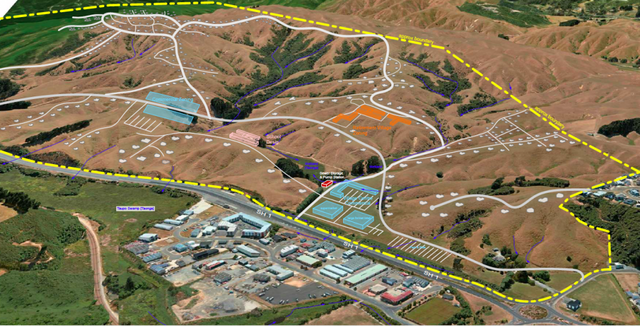
Plimmerton Farm: getting greenfields right
- Talk Wellington
- If we’re hellbent on doing more residential development in greenfields, what does “decent” look like in Plimmerton, hilly land near an existing suburb – like most of our region’s greenfields? This post is basically a guide for anyone who cares about Plimmerton, good urban development, or healthy wetlands, streams and coast, but is time-poor and can’t face going through the truckloads of documents they’ve stuck up without any specific meta-guidance (some FAQ are here). Hopefully this will help you pop in a submission! PCC’s “information” pages they suggest you use for submitting. Every one of these is a large PDF document, 90% written in technical language… aargh! The background: what where and how For those who don’t know, Plimmerton Farm’s a big proposed subdivision of hilly farmland draining into the significant Taupō Wetland and to Plimmerton Beach, just over the train line and highway from Plimmerton village (original Ngāti Toa name: Taupō). It’s going through a Streamlined Planning Process, a pre-COVID government scheme for accelerating development. The key step is the requisite change of the land’s zoning in the Porirua District Plan (“rural” zone to “residential” and other “urban” zones) that sets out what kind of stuff can then be built, where. It’s mostly streamlined because there’s just one shot for the public to have input on the plan change. One shot. Why submit? I was born and raised in Plimmerton, live here now, and intend to for the rest of my days. I’d love to see it grow, well. I would love Plimmerton to get more wallets, more hearts and minds, more faces (more diverse ones too!). But not with more traffic, and pointless damage to our environment. Right now, the proposal has some serious flaws which need sorting. I say Sorting because the changes won’t make it crazy innovative, just good enough for a development in the spot it is, being kicked off in 2020. Time matters too: there’a a bunch of good things happening imminently (and some bad Porirua trends that need to be reversed). I cover these in Get it right, below. It’s worth submitting because given the situation, a 1990s-grade development just won’t cut it. So what about Plimmerton Farm needs to change? It boils down to two themes: dial down the driveability and dial up the liveabilitymake Local the logical and easy choice for daily needs I’ll outline what needs to change in each. NOTE: There’s a third – don’t stuff the wetlands and streams. This is really important as Taupō Wetland is regionally significant, and all our streams and harbours have suffered from frankly shameful mismanagement of sediment from earthworks-heavy subdivisions like Aotea and Duck Creek, and from the earthworks-a-rama of Transmission Gully. Friends of Taupo Swamp have an excellent submission guide for you – add in some of their suggested bits to your submission. I: Dial down the driveability, dial up the liveability There aren’t many truly black-and-white things in life, but there’s one for towns: If a street is nice to drive in, it’ll be a crappy place to do anything else in (walk / eat / hang out / have a conversation / play / scoot or cycle / shop / have a pint). If it’s nice to do anything else in, it’ll be a crappy place to drive in. Mostly this is because of the nature of the automobile: big solid things that smash into our soft bodies if someone makes a mistake (75% odds of death if that’s at 50km/hour, 10% odds of death if at 30km/hour) big objects that need lots of space for manoeuvering and especially parking – which offstreet can be crazy expensive and push up the cost of a home, and onstreet hoover up valuable public space. big solid things driven by us real humans (for a while at least) who respond to the environment but also get distracted, and generally aren’t good at wielding these big solid things safely. The transport setup proposed for Plimmerton Farm makes for a much too driveable and poorly liveable place. 1. Narrow down all the roads. The current proposal’s roading setup has roads and streets that are too big, and there’s too much of them. Right sized roads for a liveable community The cross-sections for the roads include on-street parking and really wide lane widths. This is really gobsmacking for a consortium that talked a big talk about good practice. For all the reasons that Low Traffic Neighbourhoods are good, this is bad. (And it’s especially nuts when you realise that the excessively wide “arterial” roads (11 metres!) will need earthworked platforms built for them where they’re drawn running up the sharp ridges and across the tops of gullies. Expensive, damaging for the environment, and … what were they thinking?) So recommended changes: NARROW DOWN THE ROADS. Seriously. Design all the living-area streets and roads, and the centre, to be self-explaining for an operating traffic speed of 30km or less – that’s the speed where mistakes are rarely fatal. What does that look like? The designers will know and if they don’t they should be fired. Narrower crossing distances; chicanes (great way to incorporate green infrastructure and trees and seating!); narrowed sight-lines (trees! sculpture!) so no-one driving feels inclined to zoom. Reduced trafficked lanes (rori iti on the larger roads!), with properly wide and friendly footpaths. Threshold treatments, humps, modal filters, all the things we know very well are the natural ways to slow us down when driving, and make streets nicer for people. The beauty of all this “restriction” on driving is how much it frees us up for making everything else appealing. Streets become hospitable for kids to walk, scoot, bike to school safely, using the road not the footpath. Older people and those with impairments can walk and wheelchair safely. Teens coming home from town of an evening can scoot or bike home, safely. Popping down to the shops or for a coffee or to the train becomes a pleasure to do on foot, or on a scooter or bike. And you’re moving in a legitimate way – seeing and being seen, not stuck off in the bush on a “recreational” track like what they’ve described. The ordinary streets and roads are walkable, bikeable, scootable, mobility-scootable, and perfectly driveable, equally safe and useable in all weathers and anytime of day or night. Used to be a big, fast road. Now, kids bike to school and old people can chill out on it. (Mark Kerrison) (And in case you’re worried about firetrucks / rubbish trucks / buses, recall that on even Wellington City’s far more winding, narrower hilly streets everyone gets their rubbish collected and fires fought just fine. On public transport, smaller buses, like those that community transport operators use, are the way of the future for less densely-populated areas like this). Don’t build the through and loop roads. You don’t need signs like this when the only people who bother to drive in are those who live there, or who are visiting friends, because you just have to drive out again the way you came. When it’s the place you live, you’re invested in not being a dick far more than if you’re just out for a drive – or worse, out for a bit of a boyrace hoon on a massive loop route through a whole place. So just don’t build those big connector roads that enable people to drive easily from one residential area to the next, especially the ones up in the hilltops (section C) that just say “come for a hoon!” Instead, connect the living spaces heavily with bikeable, walkable, scootable, disability-friendly streets and lanes, and as much as possible, only one way in and out for cars from each living area. II: Make local logical and easy Plimmerton is a true village, with a great little centre (including a train station!) but Plimmerton Farm is ultimately a damn big area. The way to go is to enable people to get the basics of life – like school, groceries, a coffee – with a little local trip on foot, bike or scooter – it’s more of a bother to get in the car. Right now though, it needs two changes: 1. Provide for a second centre “Bumping into” spaces are known to be crucial to a feeling of neighbourhood, and in the (initial) absence of third places (worship places, community hall, sports club, cafe/pub, a supermarket is a vital social centre. Yet the north end of Plimmerton Farm is currently a deadzone for anything except residential. What things will probably look like under current layout. Like in Edwards Scissorhands without the interest of a castle. There’s no provision for a place to do your household groceries, so people will drive to Mana New World – more car trips – and less opportunity to bump into people who live nearby. (There’ll be no school in Plimmerton Farm for a while, because Ministry of Education isn’t allowed by the Education Act to build a school somewhere until there’s a certain population density of kids to fill it. A shitty Catch-22 for developments which is hopefully going to be fixed … sometime. Just another reason to make walking, biking and scooting really kid-friendly, as extra dropoff traffic for kids going to St Theresa’s, Plimmerton School, Paremata and Pukerua Bay schools will be a nightmare.) So they should provide for an additional centre in the north, including a groceries place of some kind. 2. Intensify within walking distance of Plimmerton proper. We should intensify properly, with lots of medium and even some high density (6 storeys of nicely laid-out density done well!) in the area that’s within a 5-minute walk of Plimmerton Village. The more people can live and work with access to all its many amenities, and its rail station (10 min to Porirua, 30 min to Wellington), the better. But there’s not enough density provided for there. Plimmerton Railway station: buzzing in 1916 and has only got bigger. (Photo: Pātaka Porirua Museum) So they should add another zone – E – of higher density in that 5-minute walking catchment of Plimmerton Village. What could it look like? A good example is 3333 Main, Vancouver . Submission tips On the site they ask you to fill in a Word or PDF form, saying which specific bit of the gazillion proposals you are talking about and the specific changes you want. This is a BS way to treat the vast majority of people submitting: normal non-professionals, just regular people who care about good development and liveable places. So just don’t worry about that. In those question 6 column boxes just put “Transport” and “Layout”. It’s the professional planners’ job to figure out specifically how to change a planning document. Just be specific enough that they know what you want to see. The text above is worth copying and pasting – it’ll be enough. And don’t forget the Friends of Taupo Swamp and Catchment advice is essential – definitely go read and use. That’s all you really need – just go submit! But if you’re keen to know more reasons why they should be doing this better, here’s some… Get it right, now Once this plan change is through, traditional developers like Gillies like to whack in all the infrastructure – hello, massive earthworks. And yet the place will take decades to fill with actual people – those hearts and minds and wallets. (Note even before COVID, Porirua’s growth rate was 0.1% per year. Yep, one tenth of one percent.) And extra pressure’s on to do this better because all these things are features of the next one to three years: the One Network Road Classification (sets the design specs for roads of different types) is being updated right now to be more people-friendly in the specs for roads in residential and centre areas, so designs like Plimmerton Farm’s will soon be Officially Bad Practice Sales and riding of e-bikes and e-scooters are going through the roof, continuing through and beyond COVID – this shows no signs of slowing, and prices are dropping. E-power flattens the hills of Plimmerton Farm and makes wheely active travel a breeze for the middle-class people who’ll be living here, if the streets and roads are hospitablePlimmerton Railway Station (on the most popular Wellington train line) is being upgraded to be a terminus station – i.e. better servicesThe Wellington Regional Growth Framework is setting a bunch of directions for councils on how to grow well, including well-known but often well-ignored issues like intensifying around public transport hubs Councils will soon be required to do to a bunch of a bunch of international good practice including get rid of many minimum parking requirements (in the news lately), and to upzone (enable intensification) of landuse in the walking catchment of public transport hubs. (5 min walk = approx 400 metres, 10 min = 800m).Bad trends we need to stop: Porirua’s really high car-dependency (we own cars a lot and drive a lot) is continuing, due to car-dependent urban form [PDF]– despite nice words in council’s strategic intentions.People living outside Wellington City are mostly to blame for our region’s 14% increase in emissions from transport in just 10 years. OK go submit now – and share with anyone who you think might care!
- Accepted from Talk Wellington posts by feedreader
- Tagged as:
- paremata
- porirua
- transmission-gully
- sculpture
- government
- parking
- design
- covid-19
- law
- planning
- wellington
- education
- developments
- sport
- buses
- coffee
- zoo
- people
Transmission Gully Motorway, Kenepuru, Porirua, Porirua City, Wellington, 5022, New Zealand (OpenStreetMap)
-
-
-
Two vessels broke off a mooring drifted onto rail bridge
- Coastguard Mana
- Operation Details Date/Time: Sun, 28/06/2020 - 08:30 - 10:30 Operation Type: CG Operation (good samaritan) People Assisted: 0 Total Volunteer Hours: 14 Two vessels were "rafted up" on a mooring in the channel. The mooring appears to have broken below the waterline and the vessels were swept onto the rail bridge with the incoming tide. Coastguard Mana were alerted to a Facebook post a member of the public had posted and went to invetigate. After assessing the situation it was decided to get them off quickly to minimise damage and risk to trains. A callout was activated and a number of people responded to tow them off the bridge and into the marina. Vessel Details Length: 10.00m Resources Attendees: Devine Mobiinz CMFF sarge Mark Presling Neil Cornwell zanebublitz CRV's Used: Mana Rescue 1
- Accepted from Coastguard Mana news by feedreader
- Tagged as:
- people
- trains
- water
-41.103939, 174.868398
-
-
-
Weekly Wrap Up (Week 11, Term 2)
- Wellington High School
- Important Dates Monday 29 June: Open Evening 6pm Wednesday 1 July: Music Evening 7pm Friday 3 July: End of Term 2 Monday 20 July: Start of Term 3 Wednesday 22 July: Parents’ Evening (Senior Students) Monday 27 July: Parents’ Evening (Junior Students) Important Information Board of Trustees by-election results As a result of the recent Board of Trustees by-election, Dr Wyatt Page has been elected to the Board. Wyatt will join the Board with effect from the next meeting on Monday 27 July. Reports and parent-teacher meetings Learning Profile reports for Term 2 are now available for download from the Parent Portal (see Results > Reports). Parent Teacher meetings will take place on Wednesday 22 July (Senior students) and Monday 27 July (Junior students). To make appointments go to: Go to: https://www.schoolinterviews.co.nz/ Enter the code: vdm7q (Juniors) or 5yjhn (Seniors) Choose the SUBJECT then the TEACHER. Please leave a five minute gap between bookings. Note that we are only able to run one conversation with each teacher per student. If you are hearing impaired the Riley Centre can be a challenging environment: please email admin@whs.school.nz and we will aim to accommodate your bookings separately. Revised guidance on testing for COVID-19 The Ministry of Education has circulated the following information to all schools: At a time where there are increasing numbers of colds and other winter illnesses, the Ministry of Health has revised its guidance on who might need testing for COVID-19. It is important to note that there is currently no known community transmission of COVID-19 in New Zealand. The vast majority of adults, children and young people with symptoms consistent with COVID-19 will not have COVID-19. Symptoms of COVID-19 can include new onset or worsening of one or more of the following: Cough Fever Sore throat Runny nose Shortness of breath/difficulty breathing Temporary loss of smell Health’s information on who should get tested notes that people with any of the COVID-19 symptoms who are close contacts of confirmed cases, have recently travelled overseas, or been in contact with recent travellers, should get assessed. If anyone has symptoms but is unsure if they have been exposed to COVID-19, they should ring Healthline on 0800 358 5453 or their GP for advice. Over winter there are many other viruses about that can cause people to feel unwell and have symptoms similar to those of COVID-19. Some people with symptoms consistent with COVID-19 may be tested as part of Health’s ongoing surveillance to ensure that there is no community transmission in New Zealand. If they are not close contacts of confirmed cases, have not recently travelled overseas, or have not been in contact with recent travellers, then there is no need for them to self-isolate while awaiting the test result, and they can return to school once they are feeling well. If not recommended for testing, they will be able to return to school or their early learning service when they are feeling well and no longer displaying symptoms. Wallace Street roadworks update The current phase of the Wallace Street roadworks is due for completion by the end of the month. As long as the rain holds off, Wallace Street should be re-opened to through traffic on 1 July. Following this, however, works will need to get underway along Wallace Street, near Massey University’s entrance, to upgrade wastewater pipes. This will take place in off peak hours (9.00am-4.00pm) on weekdays and traffic will often be reduced to a single lane with Stop / Go control. This is likely to take two months to complete. What’s happening? Economists breakfast with Dr Allan Bollard On Thursday, Year 13 Economics students Sarah Bennett and Rachel Woolcott, attended a Cullen Breakfast at the Wellington Club. Speaking at this week’s breakfast was Dr Alan Bollard, who has held numerous senior positions in Government and interGovernmental agencies. Dr Bollard discussed the economic impact of the covid epidemic and then participated in a question and answer session. Sarah said “the range of angles in the topic discussed was thought provoking”. Rachel commented “it was a very interesting discussion and I enjoyed listening to his jokes and insight.” Year 13 performance of ‘Girls like that’ Evan Placey’s Girls Like That is an ensemble play that explores the pressures young people face today in the face of advancing technologies. Year 13 Drama students produced and performed this play this week. The students are to be congratulated for their sophisticated performance which was an enduring piece of theatre, an achievement all the more impressive when considering that much of this production was conceived and developed during lockdown. Congratulations to all, and to Drama teacher Roger Mantel. He Kākano The He Kākano students have been engaged in a range of creative activities, cognitive thinking skills and maths throughout the week. Winter in the garden The weather over the past few weeks has seen our horticulture students spend time on maintenance, cleaning and repairing tools including secateurs. They will be well prepared for winter pruning and work outside once the weather improves. Instrumental & vocal lessons update If your Junior student is interested in taking instrumental / vocal lessons but has not yet enrolled, please download the form from the Student Hub and hand in or email the completed form to Fritz Wollner Lessons will be reorganised for Terms 3 and 4. If students have not been attending regularly, they need to see Mr Wollner as soon as possible to ensure they do not lose their spot. Achievements National Bridge Speech competition place secured Year 13 Amelia Smith qualified for a place in the National Bridge Speech competition following her success in the regional Chinese speech competition last week. Amelia will represent the North Island outside Auckland region in the competition, to be held at Victoria University on Sunday 2 August. At that event, each qualified candidate will need to present a speech, perform to demonstrate a skill and answer questions in Chinese. Finalists will represent New Zealand and compete with candidates from all over the world in October. We wish Amelia luck as she progresses through the competition. Sports Junior girls football For the first time in many years WHS has a junior girls football team out in competition. Their most recent game resulted in a very close 2-1 loss but the girls had fun and were very impressive despite some players not having very much experience. This team could not have gone ahead without the support of parents who helped with both transport and officiating. Special thanks to Bea Gladding and Jennifer Argyle who are the coach/manager dream team who make this team possible. Below are some photos of the action and sideline support. Basketball Basketball is underway with all teams at WHS having played at least one game so far. Big thanks to Jason Reddish who is taking on the entire boys programme at school which includes four teams and doing a great job. Another big thanks to Nick Andrews who along with a parent is coaching the Senior girls team. Junior Boys play on a Tuesday and another junior team plays on a Thursday. All Senior teams play on Fridays, with the top boys and girls team playing at the ASB Centre. Below are some photos from the first junior basketball game. Boys 1st XI football The 1st XI played their first game of the season, bringing home a 5-1 victory against St Patrick’s Silverstream. Their next fixture is against Newlands College this coming weekend.
- Accepted from WHS news by feedreader
- Tagged as:
- newlands
- water
- government
- transport
- music
- covid-19
- theatre
- wellington
- education
- art
- basketball
- people
Wellington High School, Taranaki Street, Mount Cook, Wellington, Wellington City, Wellington, 6011, New Zealand (OpenStreetMap)
-
-
-
Metlink to boost electric buses from 2 to 22 per cent of its fleet to meet climate change goals and passenger growth
- Greater Wellington Regional Council
- From left to right: Cr Daran Ponter – Chair, Greater Wellington Keven Snelgrove – Tranzit Brendan Prince – NZBus James Howard – Tranzit Cr David Lee – Greater Wellington Cr Roger Blakeley – Greater Wellington The ink has dried on contracts for 98 new electric buses, which will take Metlink’s fleet of electric buses to 108, significantly reducing its carbon footprint and taking Greater Wellington a step closer on its target of carbon neutrality by 2030. Metlink currently has 450 buses in its active fleet in the Wellington region 10 of which are EVs, making up two percent of the fleet. Once the 98 buses are added to the fleet the proportion of EVs will rise to 22 per cent which, excluding market leader China, is high by international standards. Seventy-three of the buses will be used on current scheduled services with a further 25 to be progressively added to routes to meet future network growth. The new electric buses will eventually take 61 diesel buses off the roads, leading to a 17 per cent drop in carbon emissions and a similar reduction in harmful emissions. Greater Wellington is delivering on its promise of a building a modern low emission bus network according to Chair Daran Ponter. “I’m sure that people across the region will be pleased to see another 61 diesel buses taken off the road and this will drive real climate benefits by deploying the new electric buses on high use areas of the network. “Just like our plans for rail, this is also about ensuring we have a fleet in place that can cope with rising population trends and demand for public transport over the next few years. That’s why 25 buses will be used to accommodate forecast passenger growth without an increase in emissions,” added Chair Ponter. Climate Committee chair Cr Thomas Nash said we have to provide attractive alternatives to our current 20th century car culture if we’re serious about responding to climate change. “Over the last two decades transport emissions rose by 14 per cent across the region, mainly from fossil fuel burning cars and trucks. “We need a real step change here and we know we can move far more people with far fewer vehicles if we provide high quality public transport. A modern, comfortable low emission fleet will play a key role in attracting new passengers, encouraging them to embrace public transport. We’ve got an opportunity to break free from the car-dominated landscape that’s been driving pollution in our cities - let’s take it,” added Cr Nash. Roger Blakeley, chair of Greater Wellington’s Transport Committee, said that the new fleet will also attract more bus drivers to the region. “This new fleet shows our intentions for growing the network and obviously more buses means more drivers. We want buses that drivers can be proud of and these state of the art buses, many fitted out right here in New Zealand, will help us attract drivers that want to be at the forefront of the public transport industry in New Zealand and internationally.” As part of the deal, NZ Bus will source 67 ready-to-go large single decker EVs from China and Tranzurban will build 31 double decker EVs at Kiwi Bus Builders in Tauranga, with parts sourced from world leading Chinese bus manufacturers. NZ Bus CEO Barry Hinkley said he was delighted that NZ Bus was making a significant contribution to NZ’s environmental performance, commenting that growing the number of EVs in its fleet is the right way forward as NZ Bus looks to a future of reduced fossil fuel usage. "With these 67 new electric buses, NZ Bus is proud to be having the largest EV bus fleet in New Zealand. With these new orders, we will see our EV fleet grow to at least 85 buses in the short term. "Obviously, we all should try and do as much as we can to look after our environment; taking public transport is a great way of reducing emissions, and electric public transport is an even better way. “We’re committed to doing our bit to help reduce emissions in New Zealand and at the same time provide people with a safe and easy way to get around,” said Mr Hinkley. Tranzurban Director Keven Snelgrove said today’s announcement is a clear demonstration of the company’s commitment to partnering with Greater Wellington and pioneering and investing in electric bus technology and infrastructure in New Zealand. He says the 31 new double deck EVs add to the company’s fleet of 10 New Zealand-built double deck EVs successfully in operation in Wellington already. “This new fleet will deliver multiple benefits of being New Zealand built, adding to our modern and reliable electric bus fleet and help reduce carbon emissions and air pollution for Wellingtonians.” The buses will be delivered between mid-2021 and early 2023.
- Accepted from GW media releases 2019 by feedreader
- Tagged as:
- rowing
- wellington
- art
- buses
- people
- electric-vehicles
-
-
-
Metlink to boost electric buses from 2 to 22 per cent of its fleet to meet climate change goals and passenger growth
- Metlink
- From left to right: Cr Daran Ponter – Chair, Greater Wellington Keven Snelgrove – Tranzit Brendan Prince – NZBus James Howard – Tranzit Cr David Lee – Greater Wellington Cr Roger Blakeley – Greater Wellington The ink has dried on contracts for 98 new electric buses, which will take Metlink’s fleet of electric buses to 108, significantly reducing its carbon footprint and taking Greater Wellington a step closer on its target of carbon neutrality by 2030. Metlink currently has 450 buses in its active fleet in the Wellington region 10 of which are EVs, making up two percent of the fleet. Once the 98 buses are added to the fleet the proportion of EVs will rise to 22 per cent which, excluding market leader China, is high by international standards. Seventy-three of the buses will be used on current scheduled services with a further 25 to be progressively added to routes to meet future network growth. The new electric buses will eventually take 61 diesel buses off the roads, leading to a 17 per cent drop in carbon emissions and a similar reduction in harmful emissions. Greater Wellington is delivering on its promise of a building a modern low emission bus network according to Chair Daran Ponter. “I’m sure that people across the region will be pleased to see another 61 diesel buses taken off the road and this will drive real climate benefits by deploying the new electric buses on high use areas of the network. “Just like our plans for rail, this is also about ensuring we have a fleet in place that can cope with rising population trends and demand for public transport over the next few years. That’s why 25 buses will be used to accommodate forecast passenger growth without an increase in emissions,” added Chair Ponter. Climate Committee chair Cr Thomas Nash said we have to provide attractive alternatives to our current 20th century car culture if we’re serious about responding to climate change. “Over the last two decades transport emissions rose by 14 per cent across the region, mainly from fossil fuel burning cars and trucks. “We need a real step change here and we know we can move far more people with far fewer vehicles if we provide high quality public transport. A modern, comfortable low emission fleet will play a key role in attracting new passengers, encouraging them to embrace public transport. We’ve got an opportunity to break free from the car-dominated landscape that’s been driving pollution in our cities - let’s take it,” added Cr Nash. Roger Blakeley, chair of Greater Wellington’s Transport Committee, said that the new fleet will also attract more bus drivers to the region. “This new fleet shows our intentions for growing the network and obviously more buses means more drivers. We want buses that drivers can be proud of and these state of the art buses, many fitted out right here in New Zealand, will help us attract drivers that want to be at the forefront of the public transport industry in New Zealand and internationally.” As part of the deal, NZ Bus will source 67 ready-to-go large single decker EVs from China and Tranzurban will build 31 double decker EVs at Kiwi Bus Builders in Tauranga, with parts sourced from world leading Chinese bus manufacturers. NZ Bus CEO Barry Hinkley said he was delighted that NZ Bus was making a significant contribution to NZ’s environmental performance, commenting that growing the number of EVs in its fleet is the right way forward as NZ Bus looks to a future of reduced fossil fuel usage. "With these 67 new electric buses, NZ Bus is proud to be having the largest EV bus fleet in New Zealand. With these new orders, we will see our EV fleet grow to at least 85 buses in the short term. "Obviously, we all should try and do as much as we can to look after our environment; taking public transport is a great way of reducing emissions, and electric public transport is an even better way. “We’re committed to doing our bit to help reduce emissions in New Zealand and at the same time provide people with a safe and easy way to get around,” said Mr Hinkley. Tranzurban Director Keven Snelgrove said today’s announcement is a clear demonstration of the company’s commitment to partnering with Greater Wellington and pioneering and investing in electric bus technology and infrastructure in New Zealand. He says the 31 new double deck EVs add to the company’s fleet of 10 New Zealand-built double deck EVs successfully in operation in Wellington already. “This new fleet will deliver multiple benefits of being New Zealand built, adding to our modern and reliable electric bus fleet and help reduce carbon emissions and air pollution for Wellingtonians.” The buses will be delivered between mid-2021 and early 2023.
- Accepted from Metlink news by feedreader
- Tagged as:
- rowing
- wellington
- art
- buses
- people
- electric-vehicles
-
-
-
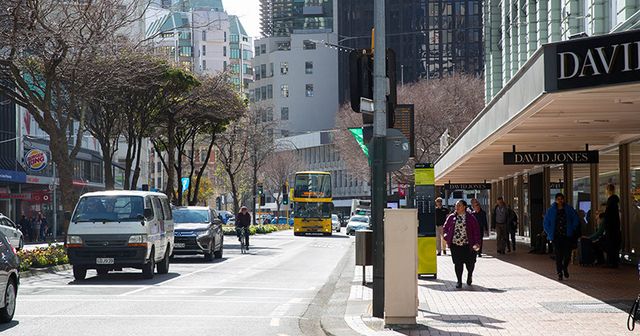
Concepts for the Golden Mile released
- Let's Get Wellington Moving
- Three different concepts for making the Golden Mile better for people and buses have been released for community feedback today.
- Accepted from LGWM news by feedreader
- Tagged as:
- buses
- people
-
-
-
Keen interest in Wellington University COVID-19 scholarship
- Victoria University of Wellington
- There has been strong interest in the free tuition Te Herenga Waka—Victoria University of Wellington is offering to people affected by COVID-19.
- Accepted from VUW News feed by feedreader
- Tagged as:
- covid-19
- people
- wellington
-
-
-
More people and fewer vehicles on the Golden Mile – have your say
- Let's Get Wellington Moving
- Today we released three different concepts for community feedback to make the Golden Mile a better place for people and buses. Improving the Golden Mile is an important part of our plans to move more people with fewer vehicles and support Wellington’s growth.
- Accepted from LGWM news by feedreader
- Tagged as:
- art
- buses
- people
- wellington
-
-
-
Let’s get serious about what older people can contribute
- Victoria University of Wellington
- It's easy to overlook the contributions of older people given the way our economy is structured, but if we can identify these contributions we’ll be less likely to respond to the next crisis by telling them to get out of the way, writes Professor Nicholas Agar.
- Accepted from VUW News feed by feedreader
- Tagged as:
- people
-
-
-
Weekly Wrap Up (Week 10, Term 2)
- Wellington High School
- Important Dates Monday 29 June: Open Evening Wednesday 1 July: Music Evening please note change of date Friday 3 July: End of Term 2 Monday 20 July: Start of Term 3 Wednesday 22 July: Parents Evening (Senior Students) Monday 27 July: Parents Evening (Junior Students) Prime Minister Jacinda Ardern visits WHS Last Friday, as part of the Creatives in Schools initiative, which is enabling our He Kākano students to work with the Royal New Zealand Ballet, our Prime Minister, Jacinda Ardern visited WHS. This visit presented the opportunity for the Prime Minister to announce an additional $4 million for the project which will ultimately enable students from 500 NZ schools to work with professonal artists and creative practitioners, benefiting from their specialist artistic knowledge and creative practices. Thirteen of our He Kākano students are involved in the programme which is aimed at enhancing student wellbeing and improving their ‘core competencies in communication, collaboration and creative thinking’, as well as inspiring awareness of careers in the arts and creative sectors. As part of the visit He Kākano shared what they had learned prior to lockdown, demonstrating fantastic memory of their routines and great coordination too. The Prime Minister also met students passionate about the creative arts, taking time to talk to them about their interests and talents. Important information Breakfast club We are pleased to announce that we are opening up a Breakfast Club at the school from the start of Term 3. This will run in the canteen each day and will be free to any student who wishes to start the a nutritious bowl of Weetbix. Resources for your mental health Melon Manual is a kete of resources specifically for teenagers’ emotional wellbeing. Supported by the Ministry of Health, the website provides videos and worksheets and advice to support the young people of Aotearoa. You can access the resources here Dyslexia – How you can help WHS Community Education Centre has a 2.5 hour talk with expert Mike Styles, on Dyslexia – How You Can Help. This is an interactive and participatory session to assist parents and loved ones understand and support a family member or friend who has dyslexia or a similar learning difference. Wednesday 24 June – 5.30pm-8pm $20 Call 04 385 8919 to enrol or go here: https://www.cecwellington.ac.nz/w/courses/1506-dyslexia-how-you-can-help Now that we are at alert Level 1, CEC courses are back up and running with a wide variety of courses on offer. To find out more, and enrol, click on the image below of visit cecwellington.ac.nz. What’s happening? He Kākano hard at work This week the He Kākano students have been busy in science, art, fashion and design classes. Achievements DocEdge documentary success Contratulations to Year 10 Sky Gobbi who has secured 3rd place in the DocEdge Student Short Documentary Competition last week. Now that it has had its premiere, Sky’s documentary can be shared. To view, click on the image below or visit https://youtu.be/jVdvCoy9TSY.
- Accepted from WHS news by feedreader
- Tagged as:
- video
- music
- health
- design
- wellington
- education
- art
- fashion
- people
Wellington High School, Taranaki Street, Mount Cook, Wellington, Wellington City, Wellington, 6011, New Zealand (OpenStreetMap)
-
-
-

Lalaga sharing the love at Norths
- Wellington Club Weekly
- Parekura Lalaga and Norths with the Jubilee Cup last year. By Adam Julian “I’ve been here at the highest points and the lowest points. It’s true, a winning club attracts people, but when we were in a slump the family buzz went missing. Today everyone has a voice,” Norths captain Parekura Lalaga warns ahead of...
- Accepted from Club Weekly 2020 by feedreader
- Tagged as:
- people
-
-
-

Choosing your mother tongue, rather than it choosing you
- Victoria University of Wellington
- Ukrainians shifting their primary language from Russian show not all people feel language is a fixed part of themselves, writes Dr Corinne Seals.
- Accepted from VUW News feed by feedreader
- Tagged as:
- art
- people
- primary
-
-
-
Virtual solutions ensure continued care for older people
- Capital & Coast District Health Board
- A new way of working ensured that Aged Residential Care (ARC) residents have continued to receive safe and quality wound care during COVID-19.
- Accepted from Capital Coast Health Feed by feedreader
- Tagged as:
- covid-19
- people
-
-
-
Misconceptions of locked-down digital work
- Victoria University of Wellington
- COVID-19 lockdowns have acted as a facilitator for digital work, but as people’s experience has occurred during exceptional circumstances it has also led them to draw false conclusions, writes Professor Alexander Richter.
- Accepted from VUW News feed by feedreader
- Tagged as:
- covid-19
- misc
- people
-
-
-
Virtual solutions ensure continued care for older people
- Capital & Coast District Health Board
- A new way of working ensured that Aged Residential Care (ARC) residents have continued to receive safe and quality wound care during COVID-19.
- Accepted from Capital Coast Health Feed by feedreader
- Tagged as:
- covid-19
- people
-
- More...
Related sites
-
-
Bryan Pepperell - Back To The Future
- Bryan Pepperell, City Councillor
- Tagged as:
- people
- election-candiates-2010
- councillors
-
-
-
Sarah Free
- I started this site as a forum to discuss all sorts of things related to urban Wellington living, and so it will continue. I hope at least some people are finding it interesting and/or useful!
- Submitted by tonytw1
- Tagged as:
- people
-
-
-
The Porirua Wellington Web Blog
- Porirua City Councillor Robert Shaw.
- Tagged as:
- porirua
- people
-
People Feeds
-
-
Sarah Free posts
- Sarah Free
- Latest Item: 15 Sep 2025
- Last Read: 1 minute ago
- Submitted by tonytw1
- Automatically tagged as:
- people
-
-
-
Back To The Future
- Bryan Pepperell - Back To The Future
- Latest Item: 20 Mar 2015
- Last Read: 1 minute ago
- Automatically tagged as:
- people
- election-candiates-2010
- councillors
-
